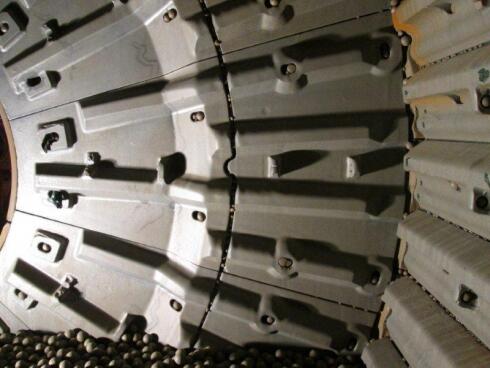
The role of a ball mill liner is to give the mill shell and heads protection against wear and tear thus increasing their lifetime and creating optimal grinding efficiency. The design of a ball mill liner depends on the drilling pattern of the mill heads, the rpm speed of the mill, the maximum diameter of the grinding media and the percentage of media filling. In this way an optimum compromise can be achieved between grinding efficiency and the equipment´s lifetime. Continuous profile studies of the liners help monitor the situation so improvements can be made..

Let Magotteaux help you find the best ball mill liner for your application. We make a point of listening to our customers so that we can get to know your business. Our engineers can adapt a design to fit your situation to ensure that it gives you the results you are looking for. Contact us to learn more.